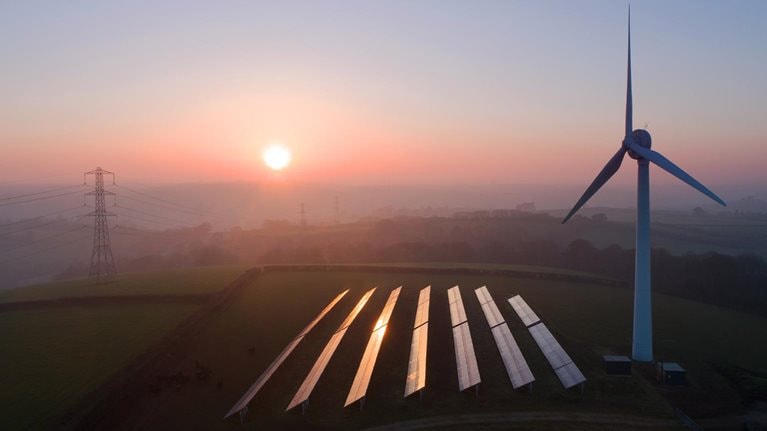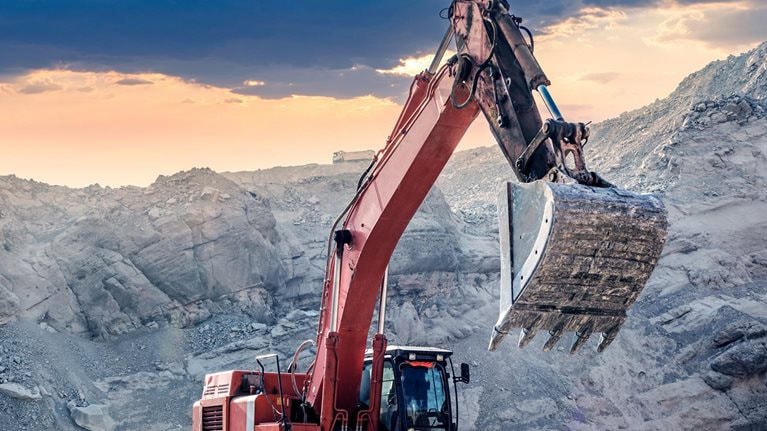As the United States moves toward decarbonization, states and their leaders will help determine whether net zero is achieved—and whether the energy transition elevates communities to deliver a more prosperous future for all. Last year, we outlined six critical action areas that could enable a more orderly transition, from designing a capital-efficient and affordable energy system to accelerating technological innovation to ensure timely deployment of new clean technologies.1 Across these areas, states have an opportunity to advance the transition, improve energy affordability, and support inclusive economic growth. Traditionally, states have influenced the creation of new sources of energy through formal policies, regulatory constructs, and planning and permitting authorities. But the national energy landscape is undergoing tectonic shifts.
McKinsey estimates that it will take more than $27 trillion of capital spending through 2050 ($900 billion per year on average) to deploy US climate solutions at scale.2 Several pieces of recent legislation include significant investments to make progress toward these aims. The Inflation Reduction Act (IRA) directs nearly $400 billion in federal funding to clean energy (see sidebar “How the Inflation Reduction Act could unlock new net-zero opportunities for state agencies”). And IRA funding promises to amplify the approximately $70 billion in clean-energy technology and demonstration projects funded under the Bipartisan Infrastructure Law (BIL). Now is the time for states to consider how to access and use this financial support to achieve net-zero targets and advance an orderly energy transition—all while facilitating economic development (transitioning workforces, for example) and environmental equity (such as clean-energy benefits for disadvantaged communities). At the same time, while public funding can cover part of the transition, states may need to explore new financing mechanisms, as well as investments from public and private capital, to close investment gaps.
This article explores tactical steps state leaders can take—and four essential roles they can play—to ensure their states meet net-zero goals efficiently and equitably while unlocking additional value. These actions could also help guide state, provincial, and other subnational leaders globally to ensure their net-zero transitions deliver for all.
Three ways state leaders can jump-start the decarbonization journey
Some states may already be off and running with their decarbonization plans. Others may be looking for a place to start. Based on our experience, we have identified three “no regrets” action areas that can help leaders initiate or accelerate their states’ plans.
Understand the state’s current role in the energy transition
In states that are in the early stages of decarbonization, leaders can consider several moves to gain a baseline understanding of the state’s current role in the energy transition—assessing both its carbon footprint and the potential for progress. States that are further along on their decarbonization journeys could still benefit from these actions, as ongoing factors (rapidly changing cost trajectories of emerging technologies, for example) may affect previous assessments.
- Create a comprehensive, quantified baseline of in-state emissions. This assessment could include point-source3 and sector-specific emissions.
- Set detailed transition targets and related policies. States can build on any previously announced state-level emissions reduction targets and commitment timelines, as well as existing clean-energy plans and road maps to achieve targets, clean-energy incentive programs, public–private convening mechanisms, and company commitments. States can lead the way by setting targets to decarbonize state-owned assets such as buildings and vehicle fleets.
- Assess the resources that can help the state achieve net-zero goals. These resources could include natural resources, physical infrastructure (such as existing electric power grid infrastructure that has supportive permitting to enable renewable integration), financial resources, skilled workers, and public support. In the process, leaders can also identify the potential resource gaps.
- Set metrics to monitor progress—and get ahead of roadblocks. Key metrics might include state-level emissions intensity, investment gaps, the percentage of clean-energy production, and impacts on high-risk communities. Leaders can also ask, “What might impede progress?” Roadblocks could include scarce private capital in the clean-energy sector, lack of cost-effective solutions and investments, permitting, supply chain risks, and lack of coordinated effort among stakeholders.
Develop or update decarbonization pathways around different scenarios
Achieving net-zero goals in an orderly fashion could prove challenging and unpredictable, given ever-changing market conditions, shifts in energy costs (including potential “shocks”), emerging technologies, supply chain development, workforce availability, and shifting policies. To get ahead of the uncertainty, leaders can develop decarbonization pathways based on different scenarios with the following moves:
- Factor reliability, resiliency, and affordability into any potential changes to the power system, from generation to the distribution grid. As a starting point, leaders could use hourly supply-and-demand matching models to understand the state’s current energy system requirements. From there, they could analyze cleantech costs (with views on the optimal role of emerging technologies such as hydrogen and carbon capture, utilization, and storage) under various policy and economic scenarios. It’s also important to anticipate market shifts. What could be the effects, for example, of a rapid acceleration of transportation and heating electrification? Or a decline in natural gas demand?
- Understand the different trajectories and pathways for climate technologies. By 2050, about 90 percent of total global emissions can be reduced with existing climate technologies; however, many of these technologies are not currently cost competitive, and only 10 percent are considered commercially mature.4 Leaders can account for available and emerging technologies and the potential for scaling technologies in decarbonization scenarios, and they can factor in state-specific considerations such as existing power infrastructure and natural resources.
- Anticipate the potential effects—intended or not—of implementing a decarbonization pathway. Considerations could include cross-sector interactions, implementation costs, socioeconomic effects (environmental-justice concerns or workforce requirements, for example), and infrastructure requirements for key technologies, such as the degree to which a grid needs to be built out to support renewables and electrification.
- Create an action plan. Once scenarios are identified, leaders will likely need to prioritize actions based on cost, feasibility, and abatement potential. A marginal abatement cost curve, which compares emissions reduction potential and costs for a set of decarbonization solutions, is one tool that states can use to assess a set of possible carbon abatement actions.5 This approach can help inform investment and policy decisions and identify the role private capital can play. A marginal abatement cost curve illustrating how the United States can stay on track to meet net-zero targets, for example, shows that investment in passenger electric vehicles (EVs) has relatively low-cost, high-carbon-abatement potential compared with investment in shipping and aviation decarbonization (Exhibit 1). At the state level, factors such as local industry, infrastructure, and energy mix could affect the potential value of abatement activities. (Later in the article, we’ll explore how states can effectively create an integrated plan.)

Coordinate with stakeholders on what it will take to be successful
- Identify the new skills and capabilities that could accelerate the transition. State leaders, for instance, may need to develop (or bring in) expertise on power systems, distributed energy resources (solar, EVs, batteries), emissions modeling, economic and financial analyses, capital formation and investment strategy, workforce development, and overall operating model.
- Stay up to date on funding opportunities and climate technologies. States could use federal tools and portals, such as the BIL maps dashboard6 to help navigate funding possibilities. States could also use industry forums, such as the National Association of State Energy Officials, to stay current on developments in technology and best practices.
- Deploy resources efficiently. To do this, states could establish a central delivery team that can enable capability building, data-based performance tracking, and risk management across agencies and initiatives.7
Four key roles state leaders could play in the clean-energy transition
State leaders have the authority to convene a wide array of stakeholders, from private investors to community organizers. They can ensure their states remain attractive places to do business while prioritizing socioeconomic considerations, such as job creation and directing resources to underserved communities. They bring greater levels of patience for financial returns and a higher tolerance for risk than private-sector participants—qualities that could prove crucial given the expense and time associated with building new energy infrastructure.
How leaders steward, organize, shape, and engage with stakeholders across the state’s energy ecosystem varies greatly across the country and will likely change dramatically in the coming years. Some states may advance most of their transition efforts directly through state energy offices and commissions. Others may lead through a broader framework of energy, economic development, and infrastructure-focused agencies. Policy tools—such as permitting reforms, clean-energy manufacturing initiatives, and workforce reskilling programs—as well as regulatory certainty and clear action plans, could all help advance the transition.
To meet the challenges of the clean-energy transition and unlock its many opportunities, state leaders could play four key roles: convenor, planner, coordinator, and catalyst. States that are further along on their energy transition journeys may assume all four roles, while those that are just embarking on it may choose to focus on fewer—or even just one.
Convenor
States can convene public and private sector stakeholders—including local communities—to develop emissions abatement and energy transition pathways, while propelling economic development (see sidebar “The characteristics of an effective convenor”). States, for example, are already convening stakeholders to develop hubs for hydrogen or carbon capture, utilization, and storage. These hubs bring together hard-to-abate industries, cleantech companies, and communities that are looking to build shared infrastructure. At the time of this writing, about half of US states are leading or participating in the development of hydrogen hubs, which involves bringing together essential industry, community, and regional partners to create detailed, multisector project plans across production, transportation, and end uses.
Another example of convening stakeholders can be found in Belgium, where the Port of Antwerp-Bruges is leading a project to aid the region’s transition to a circular and clean-energy economy. This includes developing a shared CO2 transport-and-export facility with chemical and energy companies, with a potential CO2 export capacity of up to 10 million metric tons per year (MTPA) by 2030.8
State leaders could also use their convenor role to inform the planning and development of interstate and regional clean-energy transmission infrastructure. They could bring together renewable developers, utilities, transmission developers, engineering and construction companies, independent system operators, and municipalities to help identify regional infrastructure needs and, if there’s an opportunity, facilitate delivery of renewables to neighboring states. This group of stakeholders could also explore broader implications for economic development and environmental equity. In 2019, for instance, Maine launched the Maine Offshore Wind Initiative, which brings together neighboring states and federal participants to assess the opportunity for offshore wind energy development in the Gulf of Maine, the level of investment required, and the implications for economic development.
Planner
In addition to convening stakeholders, state leaders can develop an integrated plan that sets an overall direction for the state’s clean-energy transition. Such a plan could rely on inputs from energy providers, community leaders, and other key actors across the state and surrounding regions and inform critical decisions down the line (see sidebar “The characteristics of an effective planner”). An integrated plan could include granular forecasts for power demand and distributed energy resources (such as “behind the meter”9 generation, EV assets, and storage), to account for an evolving power mix while ensuring the grid is still reliable (Exhibit 2). Such demand and capacity projections can help leaders anticipate how resources and planned activities might evolve.

To support equity and resilience, state leaders can establish environmental, social, and governance (ESG) criteria in planning for climate-resilient infrastructure, which may be costlier but better protect lives and livelihoods. States, for example, could identify climate-vulnerable regions and work with communities to build power distribution lines underground, to help prevent power outages at hospitals and schools.
New York State recently developed and approved a road map for the Climate Leadership and Community Protection Act (CLCPA).10 This road map to meet policy objectives includes a range of considerations, including state-level greenhouse gas emissions scenarios, investments in energy efficiencies, EV adoption, and sector-level decarbonization strategies with provisions to support equity. The original bill ensures that at least 35 percent of spending on clean energy and energy efficiency programs goes to disadvantaged communities.11 In New Zealand, the Taranaki region’s economic development agency, Venture Taranaki, convened community and business stakeholders to develop equitable clean-energy transition pathways and coordinate financing opportunities.
Integrated energy planning can also bring together small and resource-strained communities to assess their energy requirements and identify potential regional synergies. The Western States Rural Transportation Consortium, for instance, is developing projects to address rural-transportation issues across five US states.12
Coordinator
Infrastructure projects, especially those that are “first of a kind,” are facing rising capital costs and interest rates. To help ensure projects are executed efficiently, leaders can coordinate with state and federal agencies when planning and siting interstate energy infrastructure, to streamline permitting and reduce development lead times (see sidebar “The characteristics of an effective coordinator”).
Limited access to grid capacity and long permitting timelines, especially for power transmission lines, are significant barriers to implementing clean-energy projects, for example.13 When planning and siting transmission lines, state leaders can work with transportation and land use departments, as well as utilities, to identify existing rights-of-way and assess multiuse corridors to shrink project lead times. New York’s CLCPA streamlined a complex transmission permitting process into a single permitting office and put processes in place to allocate costs across key stakeholders.
State leaders can also work with transportation departments and utilities to plan and site EV infrastructure, to ensure there is sufficient grid capacity to accommodate potential demand growth and mitigate risks. Through the National Electric Vehicle Infrastructure (NEVI) Formula Program, states coordinate and submit EV infrastructure deployment plans that involve utilities as well as state agencies overseeing energy, climate, natural resources and environmental management, economic development, and transportation.14
Catalyst
States are uniquely positioned to catalyze the development, adoption, and scaling of climate technologies (see sidebar “The characteristics of an effective catalyst”). High up-front capital costs and uncertain demand for new climate technologies may give the private sector pause when it comes to investing in clean-energy infrastructure. However, states could potentially boost private investment by leading on public financing and exploring public–private partnerships
States, for instance, could help jump-start the creation of hydrogen hubs through public financing that improves the economics for private investment and generates broader socioeconomic benefits for communities in the form of jobs. The White House and the Department of Energy recently announced the selection of seven regional clean-hydrogen hubs that are eligible to receive $7 billion in funding from the BIL.15 Over the last decade, Connecticut Green Bank successfully mobilized nearly $2 billion of private capital via $322 million in public financing through low-interest loans and bond programs for solar installation and energy efficiency projects.16
States could also consider using subsidies to help offset clean-energy transition costs for lower-income communities and launch programs to ensure no one is left behind, particularly in communities that may be economically affected by the transition. Port Esbjerg, a municipal-owned port authority in Denmark that is highly dependent on offshore oil and gas, for example, has developed initiatives to reskill workers in renewables and related industries.17
Achieving a successful and equitable clean-energy transition in the United States will require a coordinated effort. By initiating and accelerating state-level decarbonization—and playing one or more of four essential roles—state leaders can help scale climate technologies, achieve net-zero objectives, and ensure the nation and planet benefit.


